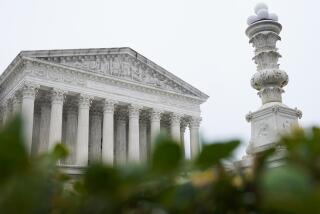Title IX Ruling Brings Criticism
Federal officials have come under criticism this week for issuing Title IX guidelines that some fear will undermine the 33-year-old law meant to give women equal opportunity in athletics.
The U.S. Department of Education released the legal clarification Friday, advising colleges on how they can remain in compliance without adding women’s teams if a student survey indicates not enough women want to play sports.
“Basically it allows schools to e-mail the survey out and interpret a lack of response as a lack of interest,” said Neena Chaudhry, senior counsel for the National Women’s Law Center. “But how many people respond to or even look at e-mail surveys?”
NCAA President Myles Brand joined in condemning the guidelines, saying they could “reverse the progress made over the last three decades.” He added his disappointment that officials issued the clarification “without benefit of public discussion and input.”
Education Department spokeswoman Susan Aspey called such claims unfounded. “It’s a clarification,” she said. “Nothing has changed.”
Schools have always had the option of complying with Title IX through a survey, Aspey said. She added that the department has simply responded to queries from school administrators by providing direction on how to more accurately gauge interest among female students.
The College Sports Council, a Washington, D.C.-based advocacy group for men’s sports, praised the guidelines as “a viable, common-sense alternative to the gender quota that has wreaked havoc on college athletics.”
Congress enacted Title IX in 1972, prohibiting discrimination against women in federally funded schools. That year, fewer than 32,000 women competed in intercollegiate athletics, the women’s law center said. By 2002, the total had increased nearly fivefold.
Schools are asked to prove compliance with Title IX in one of three ways:
* They can show “proportionality” by having a ratio of male to female athletes roughly equal to the ratio of male to female students.
* They can show progress toward equality by periodically adding women’s teams.
* Or they can argue that equal opportunity is unnecessary because not as many female students want to participate.
James Manning, who oversees the Office for Civil Rights, said colleges wanting to satisfy this “third prong” with a survey must be sure it is adequately administered and that students understand a non-response will be interpreted as a lack of interest. If anything, he said, the government “is raising the bar for using surveys.”
But Chaudhry argued that historically, officials have required additional research, including studies of high school and rec league participation in the area, as well as input from staff and coaches.
Now, she said, the burden has been shifted to female students. If they do not respond to the survey, they might not get more teams.
“What we need is more enforcement by the Department of Education,” Chaudhry said. “We don’t need surveys to give schools a way to shirk their obligations.”
More to Read
Sign up for Essential California
The most important California stories and recommendations in your inbox every morning.
You may occasionally receive promotional content from the Los Angeles Times.











